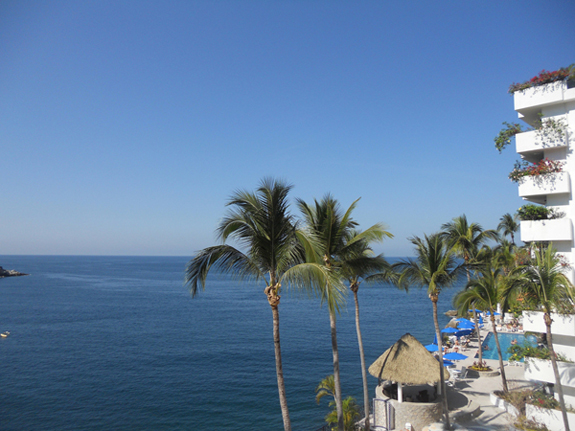

Wu Style Tai-Ji Quan

37-Postures Wu Style Tai-Ji Quan
(25-37)-Postures Tai-Ji Quan --- Advance Course
This sequence of 37-Postures is abridged and rearranged version of the traditional Wu style sequence. This abridged version has been in practice for may years. Currently, in order to help practitioners to perform every movement of the solo posture and to be able to practice well, each of the solo movements is provided with explanation in words as wells figures. Therefore, the 24-Postures which are subdivided into two parts which are provided with two courses (Class I and Class II). People can learn more benefits by consisting proctice of Tai-Ji Quan.
Wu Style Tai-Ji Quan
Taiji Class I: (1-12)-Postures
Surprises continue to effortlessly materialize as each meal is anxiously anticipated. Whether Caribbean dinning or Chef’s and Welcome dinner, your favorite for these foods, the sights, sounds, and flavors are more than just nourishing, they are life-enhancing experiences.
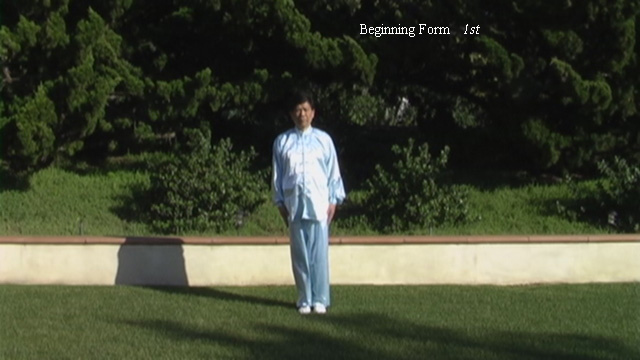
Begininning Form
Posture 1: movement 1st-4th
- Explanation of the posture name:
The initial move of the entire sequence of postures.
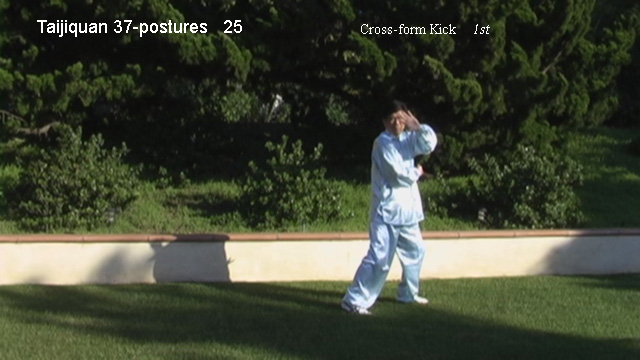
Cross-form Kick
Posture 25: movement 1st-4th
- Explanation of the posture name:
The coordinated movement of left arm and right leg in passing and touching each other is in the form of X, and is likened to the wind sweeping the lotus.
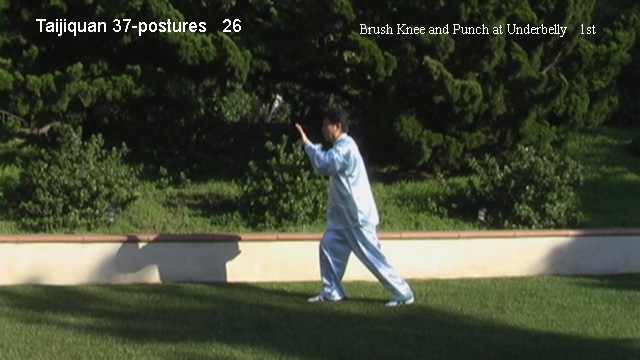
Brush Knee and Punch at Underbelly
Posture 26: movement 1st-4th
- Explanation of the posture name:
The Posture is same the 3rd Posture “Brush Knee and Twist Step” except that the last movement here uses fist instead of hand to attack the opponent’s underbelly.
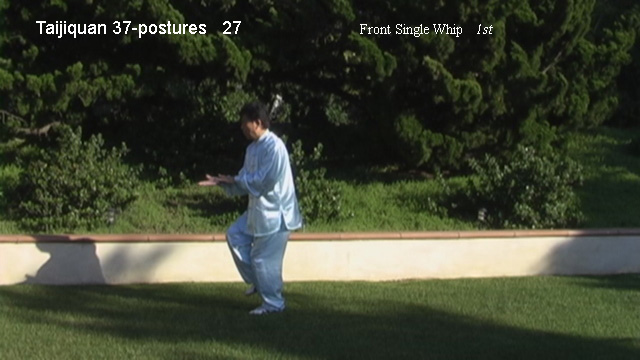
Front Single Whip
Posture 27: movement 1st-6th
- Explanation of the posture name:
When one’s waist is straightened, top of head lifted up and legs squatting, the body is likened to the handle of a whip; whereas the spreading arms are likened to the leather of the whip. The downward motion of the handle transmits the force to the lash. Hence the posture name is given.
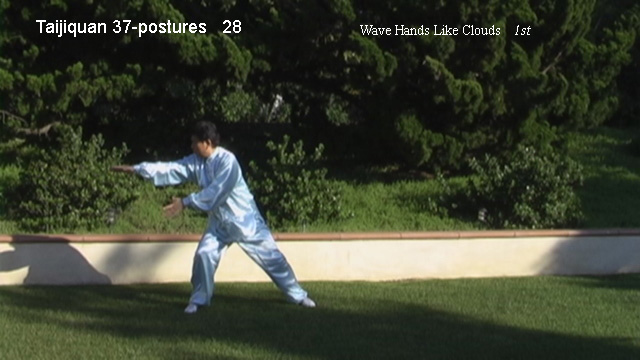
Wave Hands Like Clouds
Posture 28: movement 1st-6th
- Explanation of the posture name:
The continual and intersected circling of the two arms in even tempo is likened to the sailing of clouds in sky.
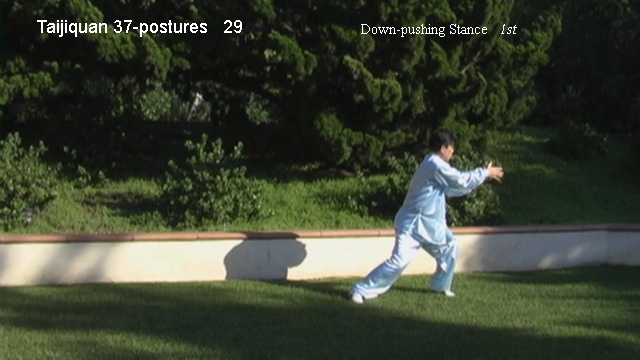
Down-pushing Stance
Posture 29: movement 1st-2nd
- Explanation of the posture name:
Here one changes suddenly from a high stance to a low stance like an eagle whirling in height of sky and descending suddenly to prey upon a rabbit.
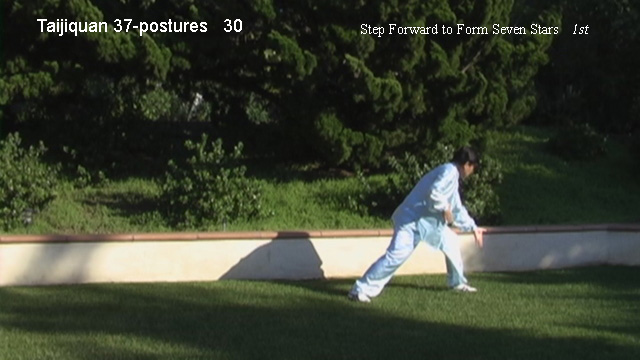
Step Forward to Form Seven Stars
Posture 30: movement 1st-2nd
- Explanation of the posture name:
In this posture the following seven parts of the body, the head, two shoulders, tow elbows, two hands, two hipjoints, two knees and one foot constitute the shape of the constellation of the Big Dipper.
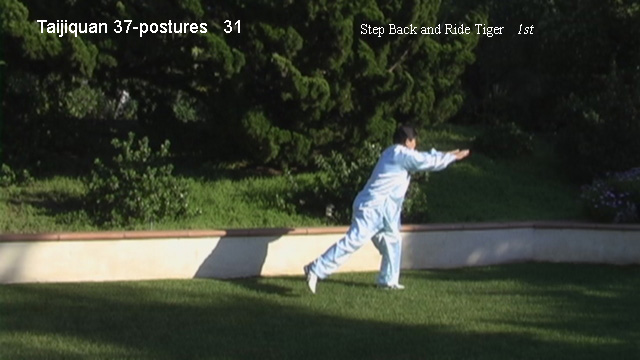
Step Back and Rie Tiger
Posture 31: movement 1st-2nd
- Explanation of the posture name:
The posture whereby one sits on one foot, with the other foot barely touching ground, and separates one’s hands, the rear hand in hook, is called in Chinese pugilism a Tiger-riding Posture.
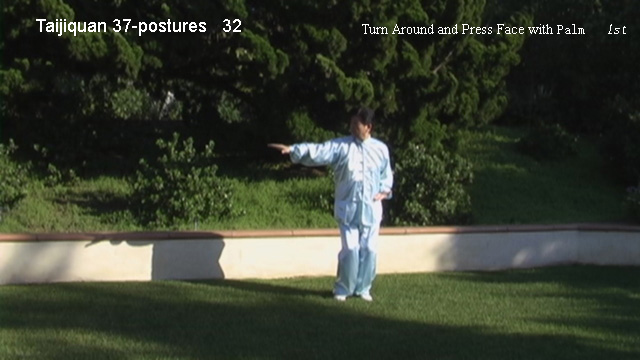
Turn Around and Press Face with Palm
Posture 32: movement 1st-2nd
- Explanation of the posture name:
The torso turn 189 degrees to press the opponent’s face with your palm, hence the name.
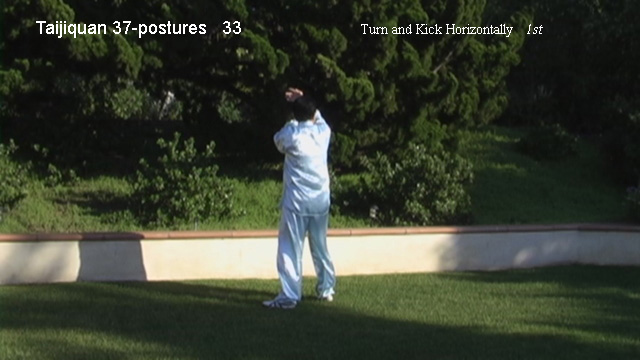
Turn and Kick Horizontally
Posture 33: movement 1st-4th
- Explanation of the posture name:
The horizontal circling or right foot, touching in turn the left and right hand which are also circling horizontally, but in reverse direction, is likened to lotus sweeping in the wind.
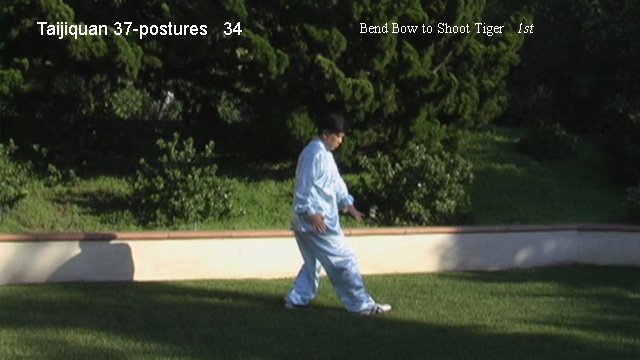
Bend Bow to Shoot Tiger
Posture 34: movement 1st-4th
- Explanation of the posture name:
The position of arms, the dodging body accompanied with an archer stance form a gesture of bending a bow to shoot tiger.
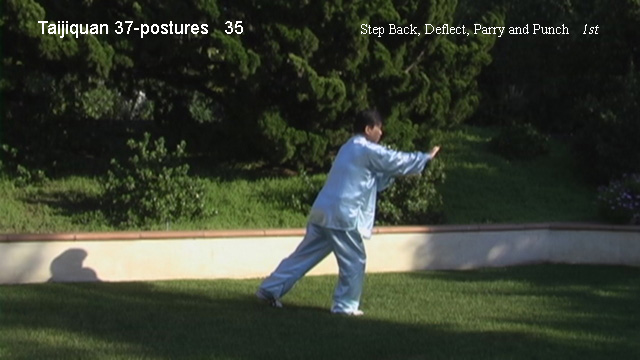
Step Back, Deflect, Parry and Punch
Posture 35: movement 1st-4th
- Explanation of the posture name:
The opponent’s offensive force is being deflected to left and right by your two hands accompanied with a backward stepping. The opponent’s chest is punched by your right fist.
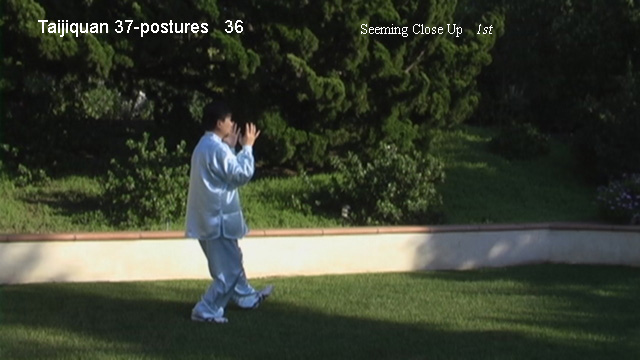
Seeming Close Up
Posture 36: movement 1st-2nd
- Explanation of the posture name:
When the two arms cross each other in shape of X, they are similar to two strips of paper pasted in X shape for sealing a door. Again when the two hands push forward they are similar to the closing-door movement. The technical terms in Chinese pugilism for the above are respectively “Sealing & Blocking” and “Intersecting & Closing”.
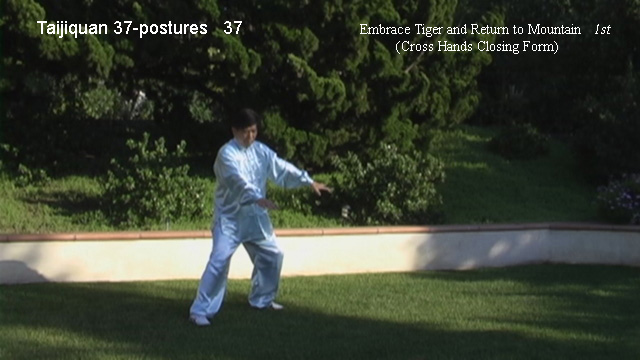
Embrace Tiger and Return to Mountain (Closing Form)
Posture 37: movement 1st-6th
- Explanation of the posture name:
Two arms arc here separated to turn and to embrace. Then two hands are crossed in front of chest to gradually resume the beginning posture, as is usually done after practising a whole series of posture.